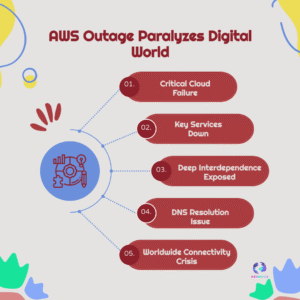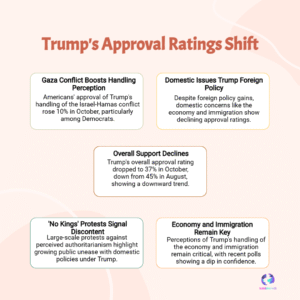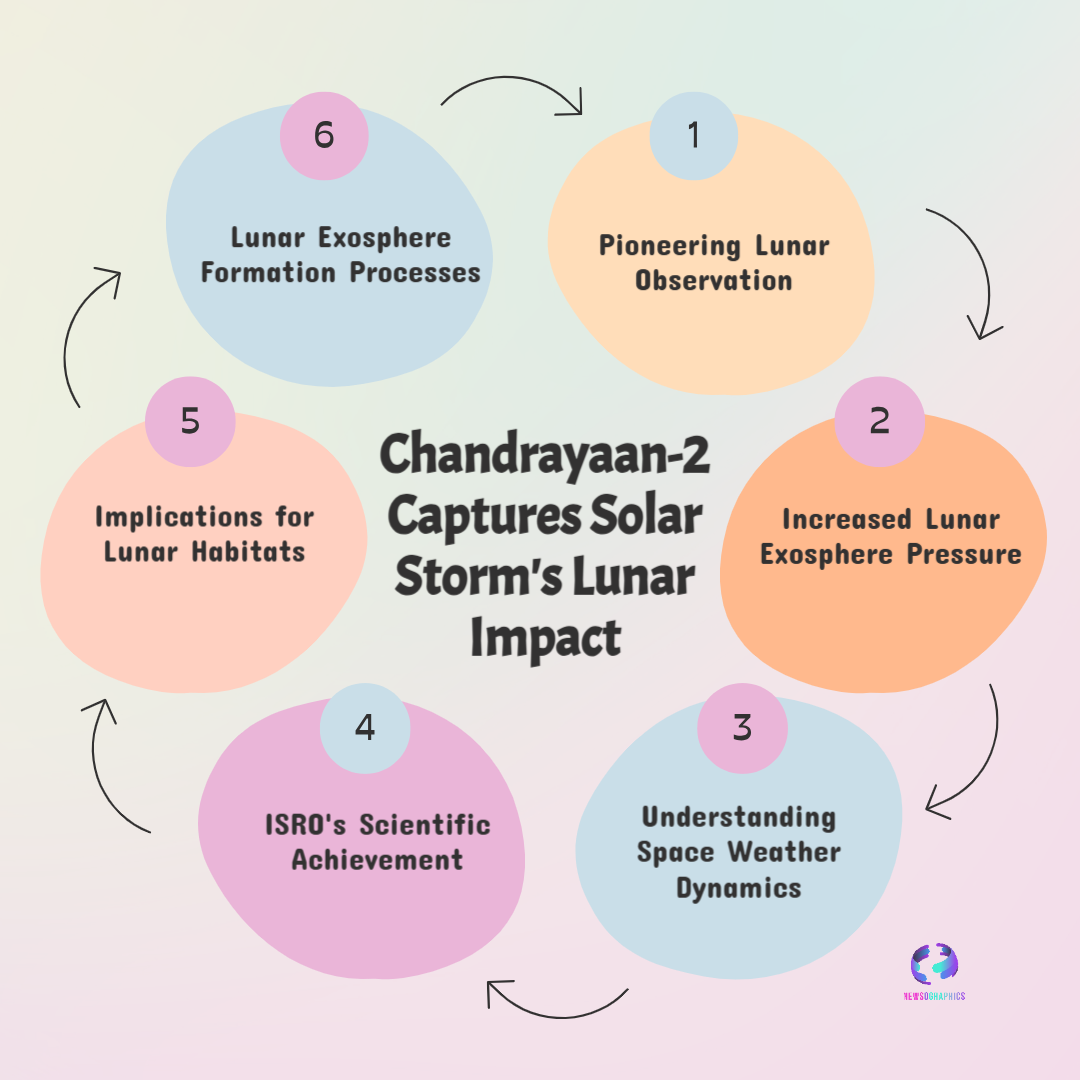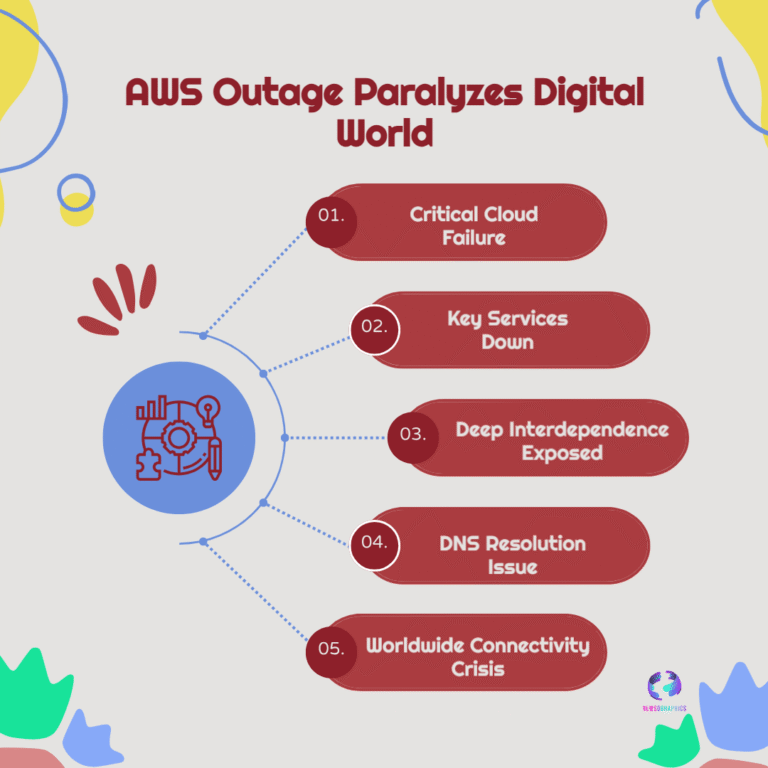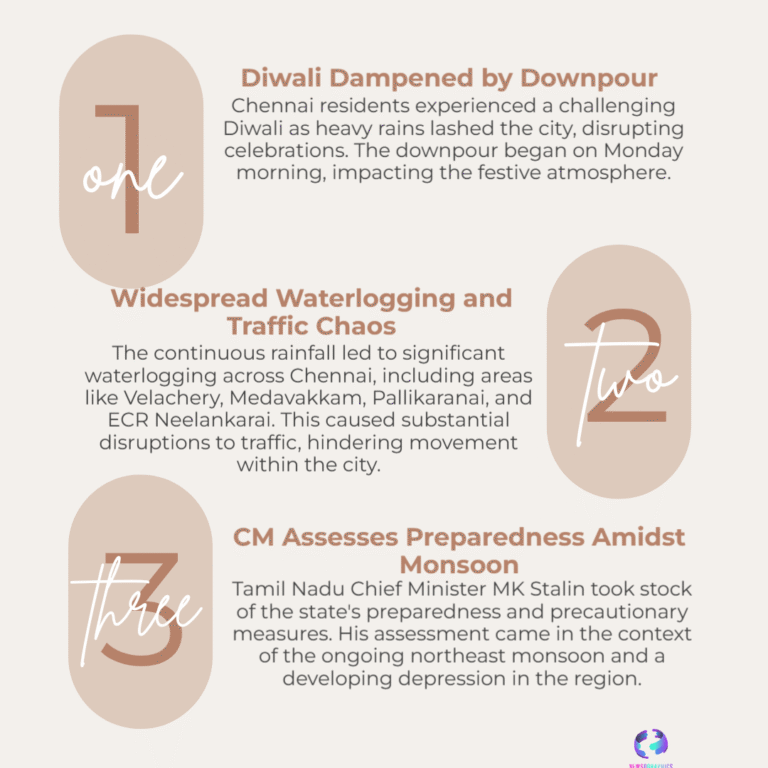SRO confirms Chandrayaan-2’s CHACE-2 instrument recorded a coronal mass ejection increasing the Moon’s exosphere density — first direct measurement with implications for lunar missions.
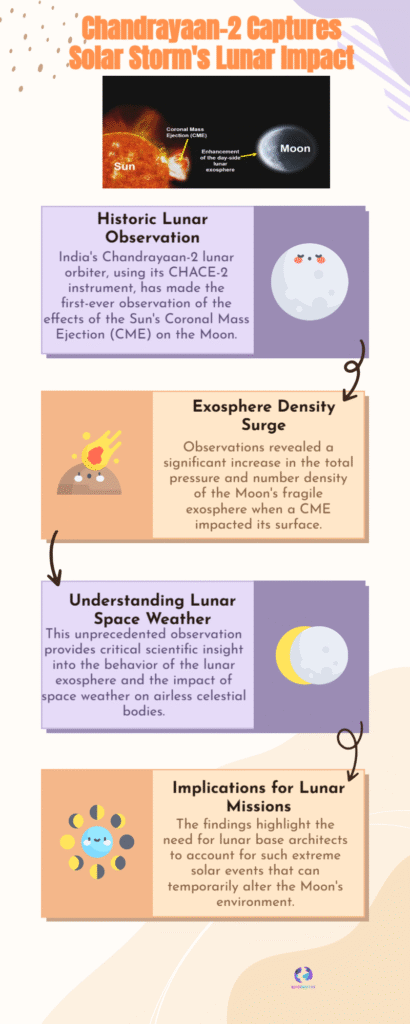
India’s Chandrayaan-2 orbiter has made a landmark discovery by recording the first direct evidence of a Coronal Mass Ejection (CME) from the Sun altering the Moon’s tenuous exosphere. ISRO says data from the CHACE-2 (Chandra’s Atmospheric Composition Explorer-2) instrument showed the dayside exosphere’s total pressure and number density rise by more than an order of magnitude when a CME hit on May 10, 2024, confirming long-standing theoretical predictions about solar storms and airless bodies.
The CME — a burst of charged particles and magnetic field from the Sun — knocked atoms off the lunar surface and temporarily thickened the surface-boundary exosphere. That temporary enhancement gives scientists a rare, real-time view of space weather effects on the Moon, improving understanding of how solar activity changes local particle environments and surface sputtering processes. These measurements are important for planning crewed habitats and scientific instruments that must withstand episodic rises in particle flux.
Chandrayaan-2’s result complements earlier models and observations from other missions but is notable because it ties a clear CME event to a measurable, rapid change in exospheric density — a first for a national mission and a boost to India’s space-science credentials. Researchers say the finding will inform lunar environment models, instrument shielding needs and timing for future surface operations during periods of high solar activity.
Search phrases likely to drive organic traffic include “Chandrayaan-2 CME Moon observation,” “CHACE-2 lunar exosphere increase May 10 2024,” “how CMEs affect Moon atmosphere,” and short queries like “Chandrayaan-2 discovery” and “lunar space weather.” This article gives readers the who, what, when and why — the instrument used, the date of the CME, the observed effect, and the scientific and mission-planning implications.

